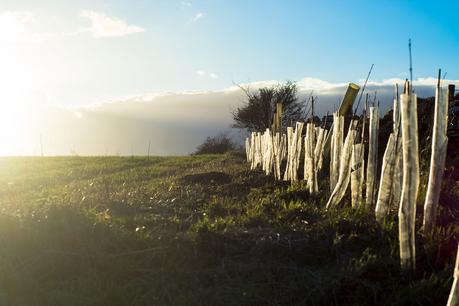
One of the most effective ways to combat climate change is to plant trees. The more trees we have on the planet, the more CO2 gets absorbed, right?
Well, it turns out it's not as straightforward as that. As more pressure gets piled on companies and governments around the world, tree planting has become the first line of defence in the fight against climate change - mainly because it's the cheapest way of doing so.
But while planting trees can be good, it's not always the solution - and it's not always done correctly.
Below, we discuss how to create a successful tree-planting project. We've looked at nine companies that are getting their hands dirty with tree-planting schemes, and decided if they're actually making a difference. Our results have been based on The 10 Golden Rules, which were put forward by experts in the field - jump to the bottom of the page to learn more.
What's on this page?
1. HS2
Despite promising to create 650 hectares of new woodland, grow 7 million trees and shrubs, and earmark £5 million for woodland development, the UK government's HS2 plan has been on a destructive warpath.
Precious ancient forests and woodland have been ripped apart to make way for development - the first golden rule is already broken. In fact, in 2019, tens of thousands of trees died because HS2 bosses claimed replacing them was more cost-effective than watering them.
The planting scheme has also left locals frustrated - residents are often having to watch weak young saplings get battered by the weather, or dry up from unwatering.
Luci Ryan, lead policy adviser for infrastructure at the Woodland Trust, said: "The government wants HS2 to be an exemplar project when it comes to the environment, but right now, it is anything but."
3. Nestlé
Nestlé has partnered with reforestation programme OneTreePlanted since March 2020, with the initiative to plant 3 million trees across the Americas.
OneTreePlanted has been praised for its ethical reforestation schemes. Not only does the organisation plant trees in areas that really need it, but it also maintains and monitors saplings, as well as using this as an opportunity to help local people. The website claims: "From arborists to loggers and researchers, the job opportunities provided by the forestry industry are endless."
So that must make Nestlé's tree planting ethical, right? Wrong. Planting trees is not effective unless existing wildlife is also looked after - something the food giant is quick to overlook.
Nestlé has admitted that a satellite rainforest monitoring service documented no less than 388,047 cases of deforestation in 2019 alone. Taking only areas within 50 kilometres of the company's palm oil mills into account, this amounted to 473,000 hectares of rainforest that were cut down.
Plus, out of the 30 producer groups most linked to Indonesian fires, Nestle has bought from 28 of them.
Successful tree planting schemes
4. IKEA
IKEA has been an environmental pioneer for decades.
In a bid to support local wildlife after forest fires in Borneo, the company's Sow a Seed Foundation has planted and maintained millions of trees since 1998 - covering 18,500 hectares of lowland rainforest.
On top of this, IKEA launched its sustainability strategy in 2012, which outlined plans to reduce its environmental impact. These plans include:
- Leading biodiversity projects across the world
- Using wood from sustainable sources - 98% of which is now either recycled or Forest Stewardship Council (FSC) approved
- Investing in forestry and other land use activities
- Driving innovation to use wood in smarter ways, and encouraging a more circular economy
To top it all off, since 2002, IKEA has teamed up with WWF to improve forest management in Europe and Asia - increasing global FSC-certified forests by an area the size of Germany.
Summary
Planting trees is fundamental for us to overcome the effects of climate change. There is, however, a time and a place.
It's now easier than ever for companies to hide their carbon footprint behind a giant advertisement for their new green tree-planting initiatives. As a result, it's becoming increasingly obvious that we - as consumers, researchers, or general members of the public - need to keep a close eye out for greenwashing from companies claiming to be environmentally friendly.

Beth Howell Writer
